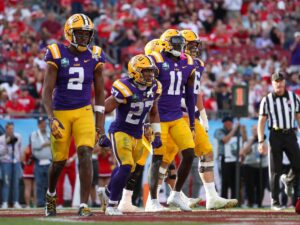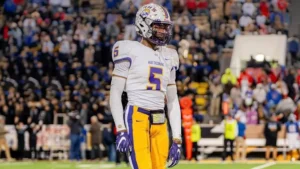
“A Moment of Mourning: Tourists at Notre-Dame Reflect on the Death of Pope Francis”
In the shadow of the iconic Notre-Dame Cathedral, a solemn quiet blanketed the plaza where tourists from around the world stood shoulder to shoulder — not in awe, but in mourning. The death of Pope Francis, the spiritual leader of over a billion Catholics worldwide, has left a profound mark not only on the Vatican but across continents, cultures, and generations. And on this gray morning in Paris, it was felt deeply in front of one of the world’s most sacred symbols of Christianity.
Although Notre-Dame has stood for centuries as a beacon of Catholic heritage and human resilience, rarely has its courtyard seen such a spontaneous gathering of emotional remembrance for a pope. The bells of nearby churches tolled slowly and deliberately in tribute. Tourists and locals alike placed candles, handwritten notes, and flowers along the fences surrounding the cathedral, which remains partially under renovation after the devastating fire of 2019.
For many, being in Paris on the day of Pope Francis’ death was unplanned — a coincidence of travel schedules or long-booked vacations. But once word of his passing spread early in the morning, people naturally gravitated toward the cathedral as if drawn by something deeper than mere tradition.
“I just had to come here,” said Maria Santos, a nurse from São Paulo, Brazil, wiping away tears. “Notre-Dame has always reminded me of my faith, and Pope Francis — he was one of us. He was Latin American. He cared about the poor. He made me feel seen.”
Santos wasn’t alone in her sentiments. Tourists from Argentina, the pope’s homeland, arrived with small Argentine flags tucked under their arms. A group of them knelt near the statue of the Virgin Mary that faces the cathedral, clutching rosaries and praying quietly. They lit candles and sang in unison the traditional hymn “Salve Regina” as curious bystanders paused, removed their hats, and bowed their heads.
Though thousands of miles away from Rome, the front steps of Notre-Dame became a kind of second Vatican Square — a space where people could feel close to the heart of Catholicism in a time of loss. It was an echo of the many global scenes unfolding simultaneously in cities from Manila to Nairobi, where churches opened their doors and congregants gathered to pay respects.
The death of Pope Francis at 88 years old marks the end of a papacy that was, in many ways, revolutionary. Born Jorge Mario Bergoglio in Buenos Aires, he was the first Jesuit pope, the first pope from the Americas, and the first to choose the name “Francis” — a gesture that signaled humility and an affinity for the poor. Throughout his tenure, he urged the Catholic Church to embrace compassion over condemnation and simplicity over splendor.
At Notre-Dame, that legacy was tangible in the stories people shared.
“He made the church feel open again,” said Colin Wexler, a teacher from Dublin. “When I was younger, I drifted away because it felt like there was no room for doubt, no room for people like me. But Pope Francis spoke about mercy. He said, ‘Who am I to judge?’ and that meant everything.”
Wexler, standing alongside his husband, noted the contrast between the church he grew up in and the one Pope Francis tried to shape — a church more welcoming, less rigid. That spirit was reflected in the diverse crowd gathered at Notre-Dame: young couples, elderly pilgrims, children with their school groups, priests in cassocks, and nuns in full habit.
A group of theology students from the United States studying abroad in France said they felt compelled to witness the moment in person. “We’ve been reading his encyclicals all semester,” said Rachel Moore, a junior from Georgetown University. “To be here now, as the world processes this loss — it’s like watching history unfold before us. He wasn’t just a religious figure. He was a global moral leader.”
The students carried copies of Laudato Si’, Pope Francis’ landmark letter on environmental stewardship, which called for urgent action to combat climate change and protect the planet’s most vulnerable. Many in the group said that work, perhaps more than anything, set him apart.
“He gave us language to connect our faith with the modern world,” Moore said.
Nearby, a French family placed a simple bouquet of lilies beneath the temporary fencing around the cathedral. The father, Étienne Rousseau, spoke about how Pope Francis had inspired him to return to the church after years of absence.
“He was not afraid to speak truth to power, even inside the church,” Rousseau said. “And he lived modestly. He chose a small apartment, took the bus. That matters. People see that, and they believe him.”
As midday approached, the plaza grew more crowded. Some came to pray; others came simply to witness a moment they knew would be remembered for generations. Camera crews filmed interviews. Street musicians played soft, meditative pieces on cello and violin. The normally bustling souvenir stands lowered their shutters out of respect.
In the afternoon, a Mass of remembrance was held inside the Cathedral of Saint-Louis-des-Invalides, with many pilgrims walking there from Notre-Dame in silent procession. Cardinal Jean-Marc Aveline of Marseille led the service, calling Pope Francis a “pastor of peace in a world increasingly torn by conflict.”
He highlighted the pope’s visits to war zones, his persistent pleas for refugee compassion, and his role as a spiritual counterweight to global division.
At Notre-Dame, moments of silence were interspersed with the low hum of multilingual prayer. A young woman from the Philippines led a quiet recitation of the Divine Mercy Chaplet, while two elderly Italian tourists read from the Psalms. Though there was no official ceremony organized, the cathedral’s steps became an organic liturgy of grief and gratitude.
As the sun began to set, the golden hour light cast a warm glow on the scaffolding that still surrounds the cathedral’s towers — a reminder that even as the Church mourns, it continues to rebuild. The symbolism was not lost on many in attendance.
“The fire in 2019 almost took this place away from us,” said Father Thomas Delaroche, a local priest who came to pray with members of his parish. “But it endured. Just as our faith endures. And just as Pope Francis helped us to believe it could endure — even in the face of scandal, division, and doubt.”
Delaroche noted that Francis’ papacy often coincided with turbulent times: the global refugee crisis, the COVID-19 pandemic, sexual abuse reckonings within the church, and a rapidly secularizing world. Yet through it all, he said, the pope remained a calm, kind voice of conscience.
“He didn’t have all the answers,” Delaroche said. “But he pointed us toward the right questions.”
By nightfall, many candles remained lit along the railings. Some visitors lingered, unsure of how to leave. Others sang quietly or whispered messages to loved ones lost, inspired by the pope’s consistent focus on family, memory, and the dignity of every human being.
A chalk message scrawled in several languages near the base of the cathedral summed up what many seemed to feel: “Merci, Pape François. Thank you, Pope Francis. Gracias. Grazie.”
In his final years, Pope Francis had spoken often about preparing for death, not with fear, but with faith. In a 2023 interview, he said, “I see death as a companion. A doorway. A return.”
On this day in Paris, that doorway felt close. And in front of the ancient, enduring walls of Notre-Dame, people came not only to grieve a pope, but to honor a man who dared to lead with love.





